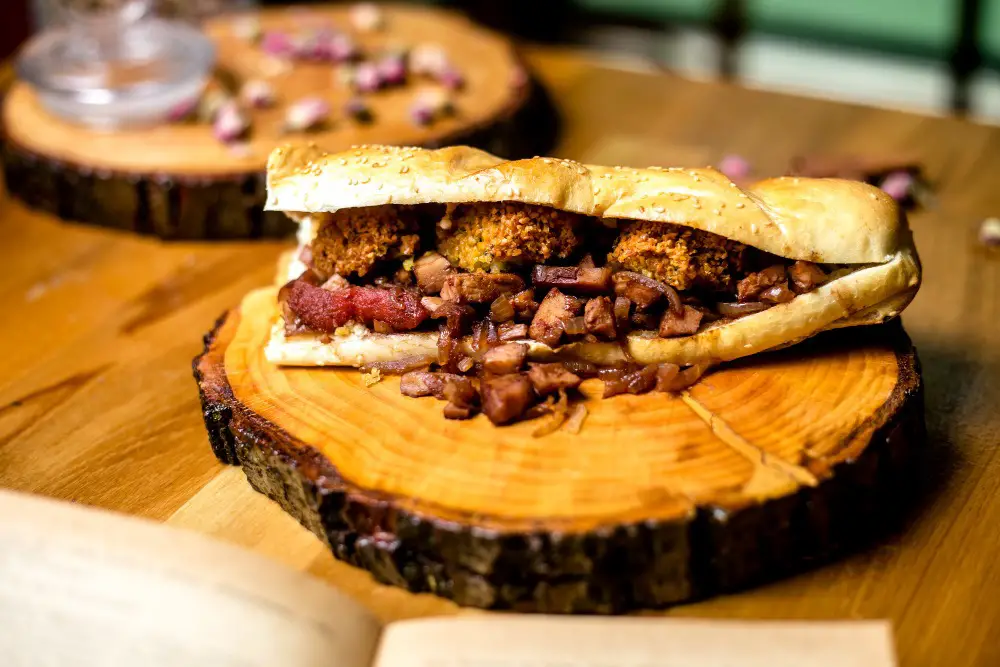What Meat Can You Use for Philly Cheesesteaks?
1. Introduction: Understanding the Philly Cheesesteak
The Philly cheesesteak isn’t just a sandwich; it’s a culinary masterpiece that has its origins in the bustling streets of Philadelphia. Born in the early 20th century, this sandwich quickly became a staple for Philadelphians before capturing the hearts of food enthusiasts worldwide. Its allure isn’t just in its delicious taste but in the meticulous choice of meat that forms its core. The meat’s texture and flavor play a pivotal role in distinguishing an authentic Philly cheesesteak from a mere imitation. The keyphrase here is “Philly cheesesteak,” and this article will explore the various meats that can be used to create this iconic dish.
2. What is a Philly Cheesesteak?
At its heart, a Philly cheesesteak is a harmonious blend of thinly sliced beefsteak and gooey melted cheese, all cradled within a long, crusty roll. While these foundational ingredients remain consistent, numerous variations have emerged over the decades, each bringing a unique twist to the classic. The sandwich’s essence, however, is undeniably its meat, with the ribeye steak being the gold standard. For those keen on mastering the art of meat preparation, this guide on thinly slicing steak is an invaluable resource.
3. Traditional Meat for Philly Cheesesteak
When one thinks of a traditional Philly cheesesteak, the ribeye steak immediately comes to mind. This cut is the undisputed champion for several reasons:
- Its rich marbling ensures each bite is juicy and bursting with flavor.
- Its inherent tenderness means it cooks to perfection, offering a melt-in-the-mouth experience every time.
- Its widespread availability makes it a go-to choice for many chefs and home cooks alike.
Yet, the flank steak, as discussed in our Philly Cheesesteak Quesadillas recipe, has emerged as a commendable alternative, especially for those seeking a leaner option or a slightly different flavor profile.
4. How to Prepare the Meat for a Philly Cheesesteak
Achieving that signature Philly cheesesteak taste requires meticulous preparation of the thinly sliced beef. Here’s a detailed guide:
- Freezing: By placing the meat in the freezer for about 20 minutes, it firms up just enough to facilitate easier slicing.
- Cutting: A sharp knife and a steady hand are essential. Always cut against the grain to ensure the meat remains tender and flavorful. For more on beef cuts and preparation, check out our Mastering Beef Cooking guide.
- Butcher’s Help: If you’re hesitant about slicing at home, don’t hesitate to seek your local butcher’s expertise. They often provide this service, ensuring you get the perfect slices for your sandwich.
5. Cheesesteak Toppings and Variations
While the meat is undeniably the star of the show, toppings elevate the cheesesteak to new culinary heights. Traditionalists swear by:
- Golden-browned onions, sautéed to perfection.
However, as the cheesesteak’s popularity grew, so did its list of toppings. Non-traditional but widely loved additions include:
- Bell peppers, adding a sweet crunch.
- Mushrooms, bringing an earthy flavor.
- Spicy hot peppers for those who like a kick.
The Cheesesteak hoagie is a delightful variant that marries the warmth of a cheesesteak with the cool freshness of a hoagie, often featuring lettuce, tomatoes, and sometimes even mayo.
6. Best Cheese for Philly Cheesesteak
Cheese is what binds the steak in a warm, creamy embrace. While Provolone is the traditional choice, loved for its:
- Mild yet tangy flavor that complements the beef perfectly.
- Exceptional melting qualities that give the sandwich its gooey texture.
Other cheeses have also found their way into the sandwich:
- White American cheese, with its creamy consistency and slightly salty undertone.
- Cheese whiz, a processed cheese spread that offers a unique taste and texture.
7. Cooking the Perfect Philly Cheesesteak
Crafting the perfect Philly cheesesteak is an art. Here’s a comprehensive guide:
- Roll Preparation: Begin by toasting the hoagie roll until it achieves a golden-brown hue, ensuring it’s crispy on the outside yet soft inside.
- Meat Magic: Sauté the thinly sliced ribeye in a hot pan until it’s perfectly browned, ensuring it remains tender.
- Toppings Time: Add your chosen toppings to the pan, allowing them to meld with the meat’s flavors.
- Cheesy Finish: Lay your preferred cheese over the meat and watch as it melts, enveloping the meat and toppings in a creamy blanket.
8. FAQs
- While ribeye is the traditional choice, other cuts like flank steak can also be used, offering a different yet delightful taste.
- Can I use other cheeses besides provolone? Yes! While provolone is classic, White American cheese and cheese whiz are also popular choices, each bringing its unique flavor.
- What makes a cheesesteak authentic? Authenticity is rooted in using ribeye steak, provolone cheese, and a fresh hoagie roll. However, the world of cheesesteaks is vast, and many delicious variations have been embraced.
9. Serving Suggestions
A Philly cheesesteak, while fulfilling, pairs wonderfully with various sides. Favorites include:
- Crispy fries.
- Golden onion rings.
- Herb-infused roasted potatoes, as seen in our Carne Asada recipe.
- Fresh, crunchy salads.
10. Conclusion
The Philly cheesesteak stands as a testament to culinary innovation. Simple ingredients, when chosen and prepared with care, can create a dish that resonates across generations and geographies. Whether you’re a purist or an innovator, the world of cheesesteaks offers a delightful journey. So, take a bite and savor the legacy of this iconic sandwich.

